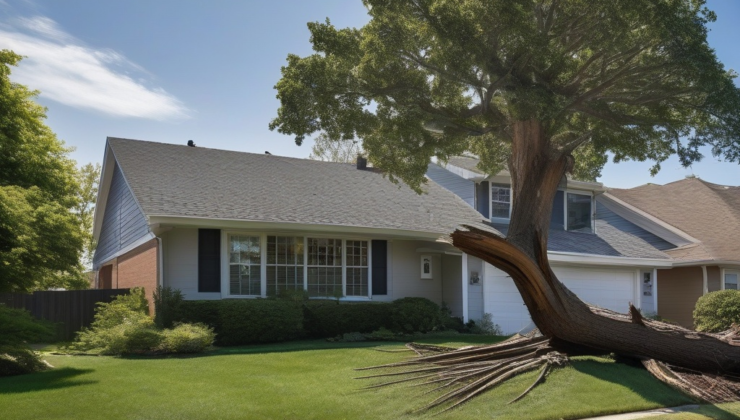

Owning a home is a significant investment, and protecting it with homeowners insurance is a wise decision. However, many homeowners are often left in the dark about what their insurance policies actually cover. It’s crucial to understand that while homeowners insurance offers a safety net, it doesn’t cover everything under the sun. Let’s delve into the specifics of what is typically excluded from standard homeowners policies and why understanding these exclusions is vital for every homeowner.
Many homeowners are surprised to discover that their insurance policies do not cover all natural disasters. While damage from events like hurricanes may be included, others such as earthquakes and floods are often excluded. This can leave homeowners vulnerable if they reside in areas prone to such disasters. Understanding these exclusions encourages homeowners to seek additional coverage or separate policies specific to their needs.
Homeowners insurance is designed to protect against sudden and accidental damage, not issues arising from neglect or poor maintenance. Problems like mold, pest infestations, or gradual wear and tear are often excluded. As a homeowner, it’s essential to maintain your property proactively to avoid damages that may not be covered by your insurance policy.
Grasping the intricacies of your homeowners insurance policy can be daunting, but it’s necessary. Every policy is different, and exclusions can vary widely. Here are some common exclusions you might find in your policy:
By familiarizing yourself with the exclusions in your homeowners insurance policy, you can take proactive steps to fill coverage gaps and ensure comprehensive protection for your home.
Homeowners often assume that their insurance policies cover all types of natural disasters, but this assumption can lead to unexpected financial burdens. Understanding the limitations of your policy is crucial, especially when it comes to nature’s fury. While some natural events are covered, others require additional policies, leaving gaps in protection.
One major misconception is the coverage of earthquakes. Standard homeowners insurance typically excludes earthquake damage, which can be a significant oversight for those living in seismically active regions. The unpredictable nature of earthquakes makes them a high-risk event, and insurers often require separate policies to manage this risk effectively. Failing to secure such coverage can lead to devastating financial consequences in the aftermath of an earthquake.
Flooding is another natural disaster that standard homeowners policies usually do not cover. This exclusion can be problematic, particularly for homeowners in flood-prone areas. Flood damage can be catastrophic, affecting the structural integrity of homes and resulting in costly repairs. Many homeowners are unaware that they need to purchase special flood insurance to protect against such occurrences. This additional insurance is essential to safeguard against the potential devastation caused by floods.
Moreover, damage from landslides and mudslides is generally not covered under standard policies, often leaving homeowners exposed to significant losses. These events can be particularly destructive, causing homes to be completely lost or severely damaged. In areas where the terrain is prone to such movements, it is crucial to explore additional coverage options to ensure comprehensive protection.
Being aware of what natural disasters your homeowners insurance does not cover is vital in ensuring your home is adequately protected. By identifying these coverage gaps, homeowners can take proactive measures to purchase additional policies, providing peace of mind and financial security in the face of nature’s unpredictable forces.
When it comes to homeowners insurance, many property owners believe they are shielded from all possible damages their home might face. However, this perception often overlooks the critical aspect of maintenance-related exclusions that are part and parcel of most insurance policies. Homeowners insurance is not a substitute for regular home upkeep, and understanding what falls outside the scope of coverage is essential. Ignoring these exclusions can lead to costly repairs that catch homeowners off guard.
One of the most common exclusions in homeowners insurance is damage resulting from wear and tear. Over time, all homes experience natural degradation; roofs age, plumbing systems corrode, and paint peels. Homeowners insurance is designed to cover sudden and accidental events, not the inevitability of aging materials. Regular maintenance is crucial to prevent minor issues from escalating into significant problems that are not covered by insurance. Homeowners should be proactive in inspecting and maintaining their properties to avoid the financial pitfalls of neglect.
Mold and rot often lurk as silent threats within homes, and they are typically not covered unless resulting from a specific covered peril, such as a burst pipe. The growth of mold is commonly due to poor ventilation or unchecked leaks, both of which are maintenance issues. Addressing humidity levels and fixing leaks promptly can mitigate these risks. Insurance companies expect homeowners to manage these conditions, as failure to do so is viewed as neglect, not an insurable accident. Therefore, regular inspections and prompt repairs are necessary to keep mold and rot at bay.
Understanding the limitations of your homeowners insurance policy with respect to maintenance issues is vital for safeguarding your investment. While insurance offers protection against unexpected disasters, the everyday care of your home is your responsibility. By staying informed and vigilant about these exclusions, you can better manage your property and avoid unforeseen expenses.
ENGLİSH
3 gün önceSİGORTA
3 gün önceSİGORTA
3 gün önceSİGORTA
6 gün önceSİGORTA
8 gün önceSİGORTA
8 gün önceDÜNYA
17 gün önce 1
Elon Musk’s Father: “Admiring Putin is Only Natural”
11477 kez okundu
1
Elon Musk’s Father: “Admiring Putin is Only Natural”
11477 kez okundu
 2
Minnesota’s Proposed Lifeline Auto Insurance Program
9407 kez okundu
2
Minnesota’s Proposed Lifeline Auto Insurance Program
9407 kez okundu
 3
Introducing Vivo Y300 Pro+: A Blend of Power and Affordability
7349 kez okundu
3
Introducing Vivo Y300 Pro+: A Blend of Power and Affordability
7349 kez okundu
 4
What’s the best car insurance for seniors?
6007 kez okundu
4
What’s the best car insurance for seniors?
6007 kez okundu
 5
AMD’s Unprecedented Rise in the Chinese Processor Market
5095 kez okundu
5
AMD’s Unprecedented Rise in the Chinese Processor Market
5095 kez okundu
Veri politikasındaki amaçlarla sınırlı ve mevzuata uygun şekilde çerez konumlandırmaktayız. Detaylar için veri politikamızı inceleyebilirsiniz.